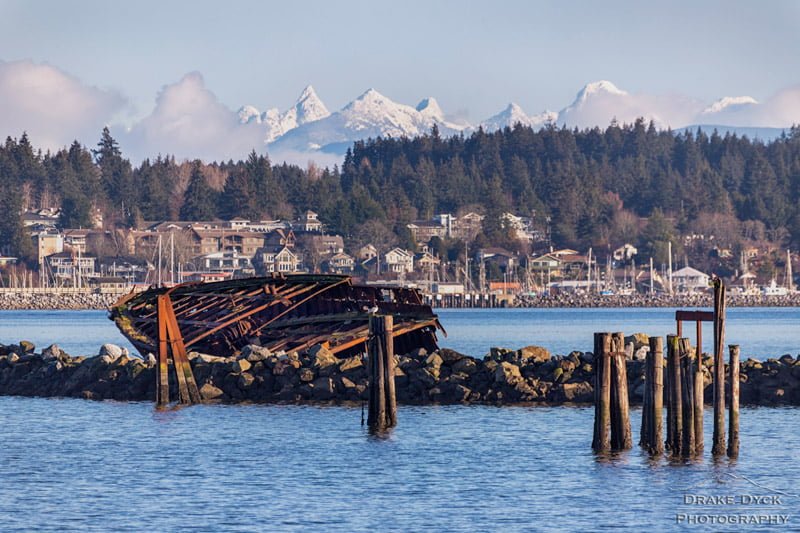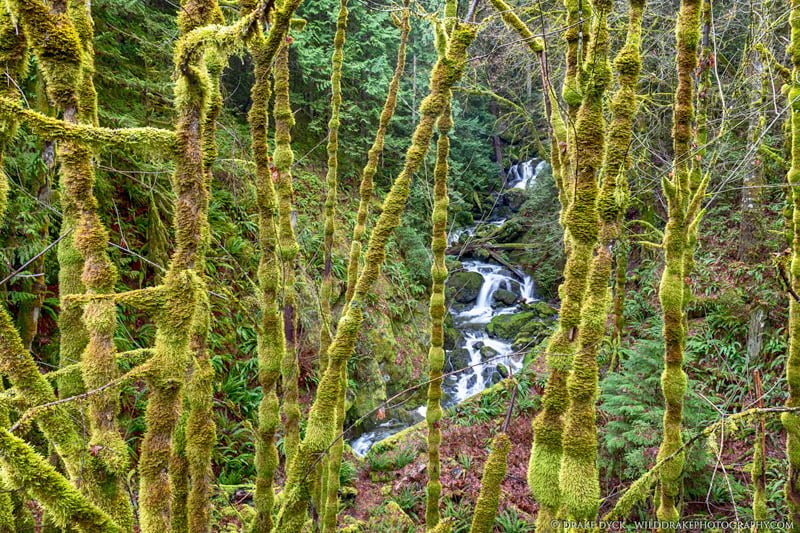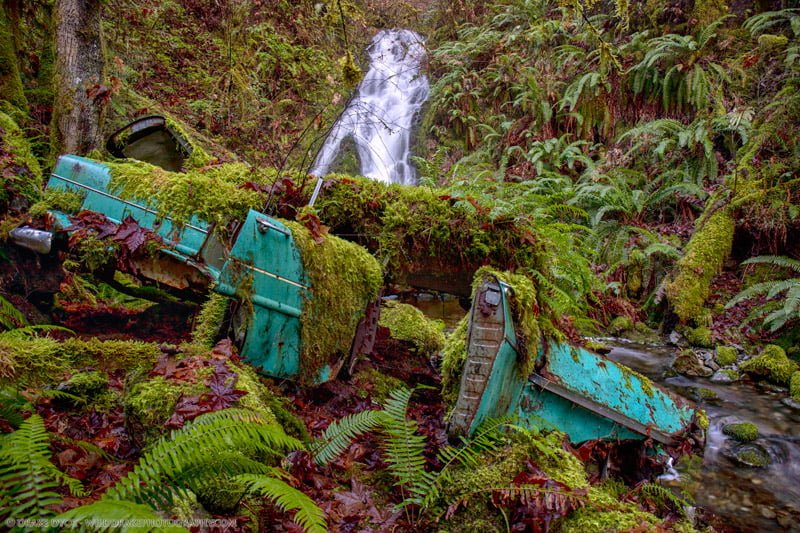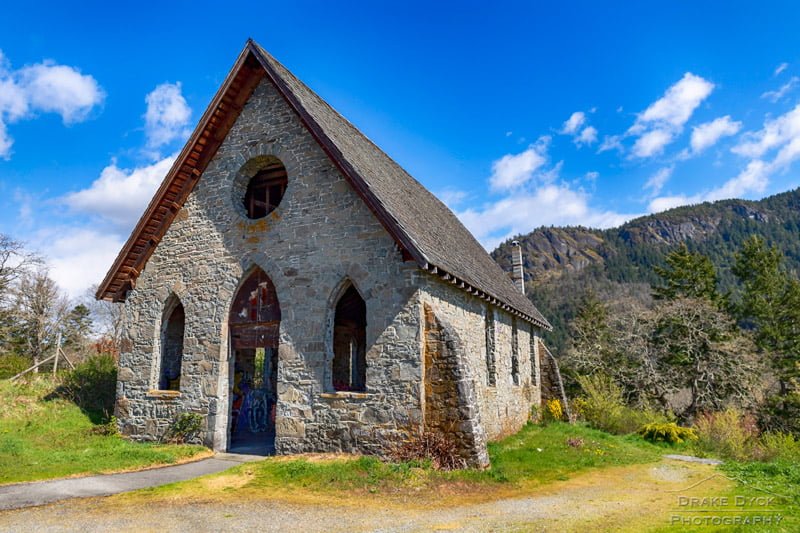Disclosure: This post may contain affiliate links. I earn a small commission of product sales to keep this website going.
This is the first in a series of interviews I’ll be doing with photographers of various genres this year.
For this series, I wanted to explore what “ethical photography” means to different photographers.
Thank you so much to Drake Dyck of British Columbia for taking the time to participate in this first interview. Drake is a landscape & nature photographer who prides himself in considering the ethics of every photograph he makes. You can see more of Drake’s work on the following channels:
- Portfolio
- Instagram – @DrakeDyckPhotography
- Twitter – @DrakeDyckPhoto
- YouTube – Drake Dyck Photography
- Flickr
Our interview below:
What does it mean to have “ethics” in nature photography?
To me, ethics play an important part of how I go about photographing scenes, so I want my photography to be a positive activity and do no harm.
It starts with planning, where I consider the areas I go to. Certain areas support a more fragile ecosystem than others and can easily be negatively impacted by the presence or actions of a photographer.
When I arrive at a location I look for ways I can get the shot I envision, with little or no impact upon the environment or others. It involves being aware of sensitive areas, including the plants and wildlife that are there, and taking the appropriate precautions not to disturb them.
Often, when on location, the “perfect spot” to be set up for a shot will have some unwanted elements in it. It could be some tall grasses or overhanging branches in the way, and it would often be easy to just pull out the grass, or break off the end of the branch, so it’s not interfering with that otherwise perfect shot, but rather than do that, I will adjust my camera position, choose another lens option, or even hold the branch (or other object) out of the way if that can be done without causing damage.
In general terms, it means staying out of areas designated as protected, sensitive, closed, or signed to keep out. I follow the Leave No Trace principles, to the best of my ability and always make sure that I pack out anything I bring in.
Ethical considerations don’t end after I leave the location, as post-processing and sharing of the images are included in my practices as well. I do not believe in doing anything that is intentionally deceptive with the image, or how I chose to share it, nor do I share precise location information when I feel that it could cause a negative impact upon the sensitive location.
This is (part of) one of a number of old ships that were sunk long ago to build up a breakwater. I would have liked to get closer and probably could have made it out to the rocks if I’d waited a couple of hours for a lower tide, but that wasn’t what stopped me. Not only are there some environmentally sensitive areas on the shore nearby, but the breakwater is also marked with no trespassing signs and it would likely be dangerous to be climbing around the wrecks to get a ‘good’ picture. These issues actually resulted in my repositioning myself further to one side of the breakwater, which enabled me to capture the wreck with the town and snow-capped mountains in the background; something which I might have otherwise overlooked.
Why are ethics in nature photography important?
A photographer’s actions can have a significant impact upon all of these areas and I think any time we can have a respectful conversation about them will have some benefit.
Other people wanting to experience the tranquil outdoors typically don’t mind a photographer who is unobtrusively photographing the surrounding area that they’re in if that photographer is considerate and not doing things that they shouldn’t be doing. It’s when photographers cross that line and start to make a nuisance of themselves, or worse, that they become upset.
If I was enjoying a trip to a National Park or other protected area, I would hope that I could experience the wilderness and wildlife in their natural habitat, without having to worry about anyone negatively impacting that. Unfortunately, it is too common for unethical photographers to do exactly that.
A big part of the problem is that many people do not know what kind of impact their actions may have, so unethical may not be the best term for them; it’s something more along the lines of “ethically ignorant”; although, there are a few that are fully aware and don’t care, so long as they get what they want.
Those are the ones that do things like disturb other park visitors and harass the wildlife with drones, or simply by getting too close. Not only does this annoy and inconvenience the human visitors to the area, it can have a huge impact on the wildlife.
It can interfere with their feeding, cause a flight response, which burns up precious energy, and can drive them into areas that they are in conflict with other wildlife or humans.
On a different scale, some photographers “bait” animals. This involves leaving food for, or feeding animals, or birds, in the hope that they will be able to get a great shot that would be a lot more difficult, or impossible to get, without doing that and it once again can change an animal’s behavior in negative ways.
This particular image features Waugh Creek, and I made it from a well-traveled trail, near an observation platform. The view from the platform was much less interesting and was partially obscured. The area between the path/platform and the trees to my front was fenced off and marked to stay out, however, as there was little to no other people using the area and the fence was easily crossed, it would have been simple to get in a position with a clear view. Rather than do that, I chose to move down the path about ten metres from the viewing platform and found an area where I had a nice view of the falls with a wall of moss-covered trees in the foreground, providing a much more interesting image than would have been possible had I not stuck to my ethical principles.
Are there any trends in nature photography that, in your view, don’t meet the spirit of ethical photography?
The first one that comes to mind is the irresponsible geotagging or specifying the exact location of sensitive locations on social media.
It’s not because I don’t want anyone else to get a better shot at a secret location, rather, there have already been many instances of locations being tagged and then an influx of people go to an area that cannot handle those numbers and it suffers irreparable damage.
Fortunately, more photographers are becoming aware of the issues with identifying specific locations and are being more responsible about exactly what they decide to post.
Another would be manipulation that is intended to deceive viewers. You get some images that are changed in ways from stretching mountains, stacking focal lengths, replacing the sky with an unrealistic version and highly oversaturating them. Sometimes the description with the image leaves the impression that this is a realistic photograph of the scene the photographer saw, when in fact it is more something that may be beautiful to look at, but never existed in real life.
If the viewer was provided with a way to know the image was manipulated to depict the photographer’s impression of the scene, or something similar, this trend would be less concerning.
Some manipulation is almost unavoidable in how the sensor/film reacts, focal length and shutter speed used, etc. It is the element of deception that becomes an ethical issue for me.
I found this old, abandoned car by a waterfall while exploring a small river. This was obviously an area that rarely saw any visitors and there were no formal trails nearby. I had been carefully exploring the area around the riverbed and faintly heard what sounded like a waterfall nearby. When I got close I could see this old Vauxhall, covered in moss and ferns. I would have liked to get a little higher up the embankment behind me, but doing so would likely have caused the soft, wet soil, ferns, and moss-covered rocks there to slide away, so I found a position with an interesting view where I did not have to disturb or damage the areas I was moving about in. I was also keenly aware that not everyone who might go there would be as careful to preserve the environment and while I wanted to post the image to my social media accounts, my fear was that if I gave away its location, others might start going there and before long the stream and entire surrounding area would be disturbed. I, therefore, made the conscious decision that I would not post any information that would hint at its location.
What initially prompted you to start considering ethics in your photography?
My appreciation for nature has grown over the years, and I’ve become increasingly concerned about the damage being done to the environment and wildlife. I live in an area that is surrounded by temperate rainforests, with lots of animals and easy access to natural areas but have seen the decline of some of these over the years.
When I started going on hikes & trips for photography I was even more immersed in nature and saw some of the damage other people, photographers included, had done to some areas.
Without thinking of it as ‘ethics’ at the time, I started to try to make sure I wasn’t one of those contributing to that damage. As I read more, including other photographer’s thoughts and practices, I started to understand more about various issues and the impact photographers could have upon their natural surroundings.
While most of my photographic principles and ethics had probably taken root by then, the real point when I decided that I was going to make a consistent effort to practice ethical photography was in early 2017 when photographer Darwin Wiggett wrote about it in his blog, Oopoomoo, where he encouraged other photographers to think about it and post their own photographic ethics online for others to see.
Is there any situation you wish you had handled differently?
If I think back to my early days in photography, there were a few times when I went to a zoo or aquarium, with the express intent of photographing the animals. When I posted those photos on social media, I do not believe I mentioned they were taken in captivity.
It’s one of those things that I am torn about; on one hand, I saw wildlife that I might otherwise never have had the chance to see, and I did learn a little more than I would have had I not gone there. On the other hand, I paid to get into these facilities, and in that way contributed to their continuing to exist and continuing to keep animals in captivity, often in unnatural settings that are far smaller than the range they would have in the wild.
Now I wouldn’t even consider doing something like that. The exception would be if I were to photograph at a true rehabilitation centre, or something similar, where the animals there were brought in because they were injured and only remain there if they are unable to be returned to the wild. In that case, I would prefer that any images published would include information that the animal(s) in the images were at such a facility, so the viewer would not mistake them for being in the wild.
These days when I photograph animals, it’s in the wild on my photo adventures, and that’s the way I prefer it.
On another occasion a number of years ago, there were some interesting old ruins that were starting to be overtaken by nature and had graffiti all over them. They were behind a tall fence, with a gate that was normally locked shut with a heavy chain. I’m pretty sure there would have been No Trespassing signs on the fence as well.
On one occasion that I was in that area for some reason, the gate was not chained shut and I used that to justify, in my mind at the time, that it was okay to go through the gate. While inside the fence line, I was able to make some images that would otherwise not have been possible, and I was careful where I went, so as not to disturb or damage anything, leaving the same way I got in. I never had to climb the fence or force anything open to gain access, so there was really no harm done, right?
Well, that was my thinking at the time, but in retrospect, it was disrespectful, potentially dangerous and the images could almost be seen as endorsing going into restricted places for photography.
What I should have done is the same thing I had done on other occasions when the gate was properly secured; photographed through or over the fence.
No, I certainly wouldn’t have been able to access the same areas and get the same shots as I did going through the insecure gate, but I wouldn’t have been contributing to the problems that type of activity causes, and I’d have had to be more creative in the images I did get.
The Butter Stone Church has an interesting history but has long since been abandoned. It’s windows, doors and everything inside are long gone, although parts of the interior are marred with graffiti. It sits alone on top of a small hill, just a short distance from the road, and has a driveway that leads up the hill to it. Many people simply walk up the hill from the road, and are not visible from the one house nearby, until they emerge from behind the church. This would make it easy to get photos from the back, far side, and even the interior, without being questioned and it is unlikely anyone would notice even if you were to move freely all around the church. In doing research on the site before I went there with a friend, we learned that the church is on first nations land and while they wish to control who has access to the area. After contacting them, we explained that we were interested in photographing the old church and would respect the building and location. They were satisfied as to our intentions and we were able to obtain a letter of authorization so that we could freely move about the church and photograph as we liked.
Do you have any tricks you use to help you consider ethics when you’re out with your camera?
Practicing ethical photography happened in a natural, progressive way for me. I had slowly started to avoid doing things that just didn’t feel right to me and that I wasn’t comfortable seeing other photographers do, and by the time I realized that’s what I was doing, I had been so for some time.
The more time I spent immersing myself in nature, the greater the connection I felt and the less conscious thought I put into practicing ethical photography.
I find it’s good to remember that just because something is not illegal, or that it is something that you are capable of doing, it’s not always the (ethically) right thing to do.
Thanks again to Drake for taking the time to share his views on ethical photography. Be sure to follow Drake at the links in the beginning of this article for more of his work.





William Long
Sunday 16th of October 2022
Photographer's consumption of new gear concerns me, especially since much of it exists simply because they are chasing minimal increases in image quality that are perhaps necessary for them to advance themselves professionally.
I am also concerned about the amount of travel that professional photographers do. Getting to that great location helps the photographer but sure hurts our atmosphere. We need to find a way to reward great photography done locally.
These are two ethical issues that I have about photography.
John Peltier
Monday 17th of October 2022
It’s a paradox for sure…I know one self-proclaimed hardcore conservation photographer who always has the newest gear and travels all over the world to preach conservation. Seems to me his message would be better served using a network of local photographers with older (yet still capable) gear.